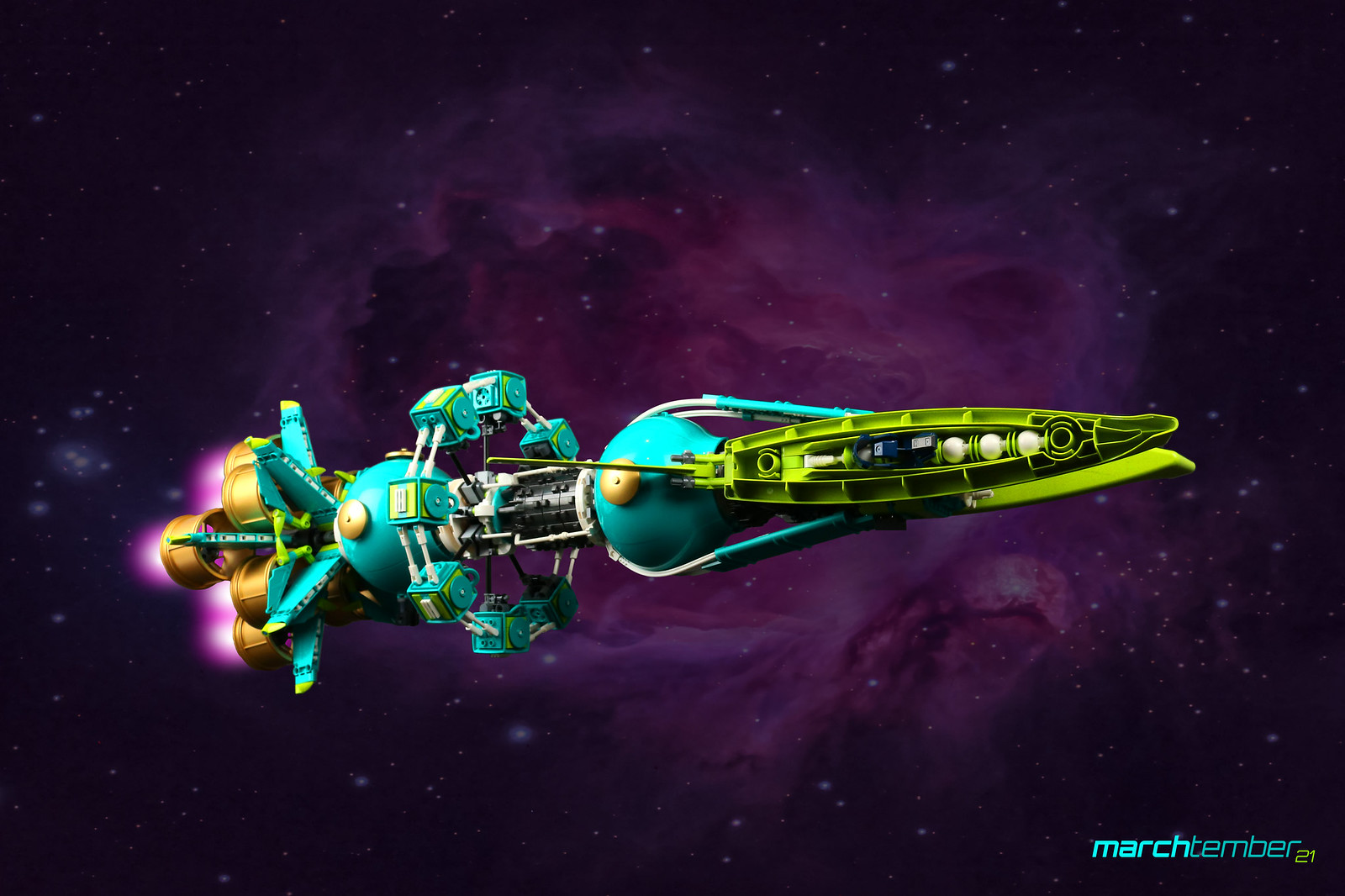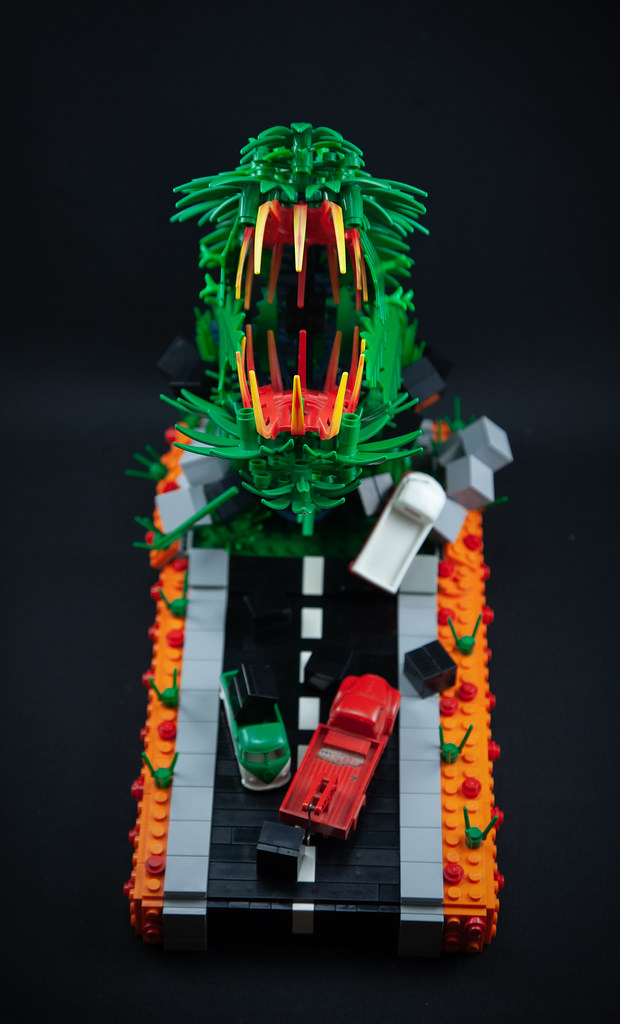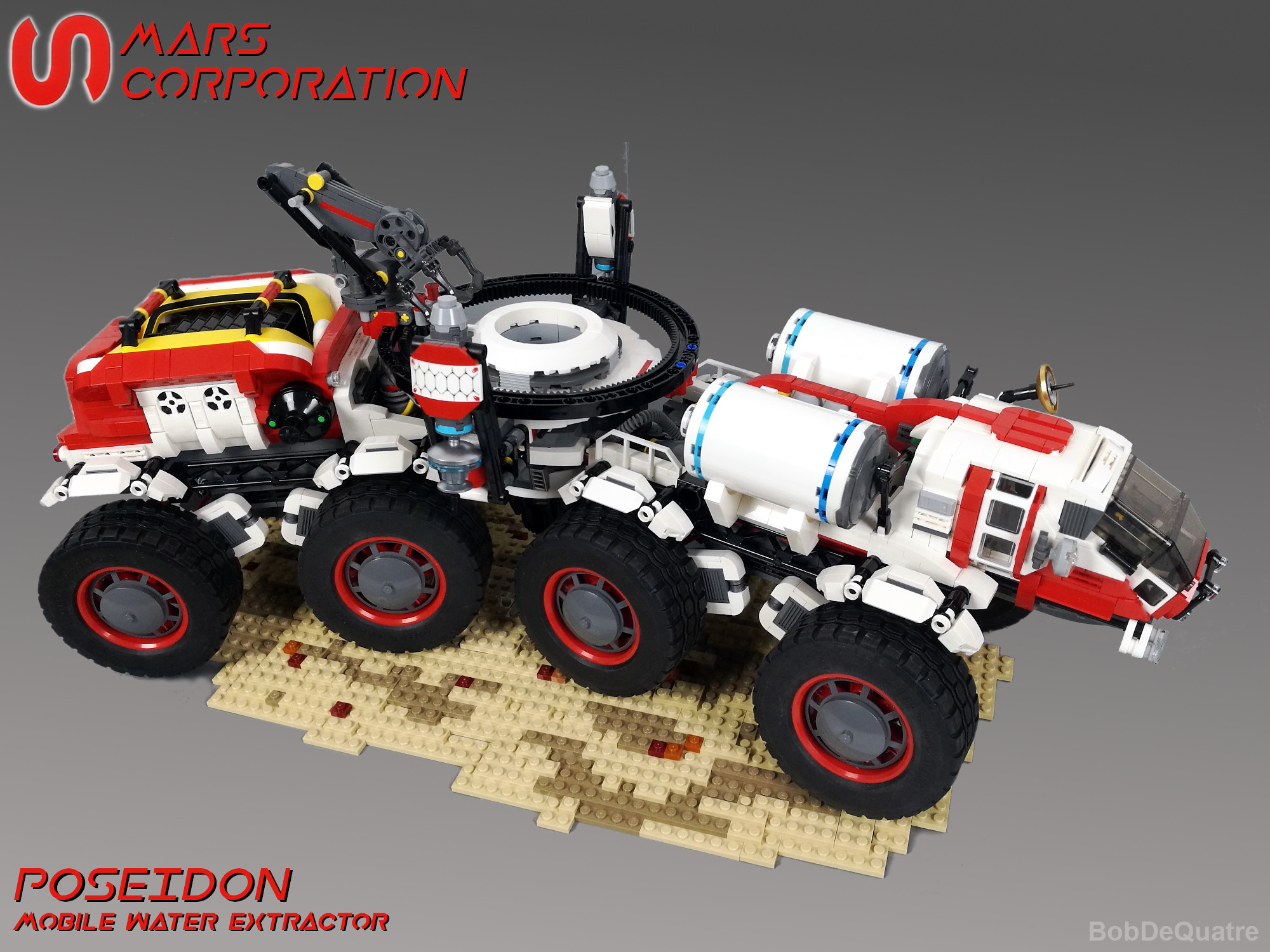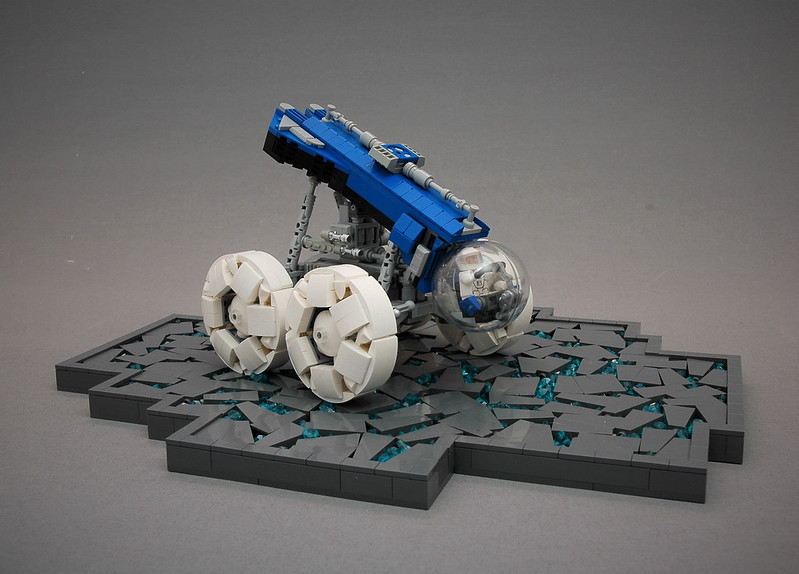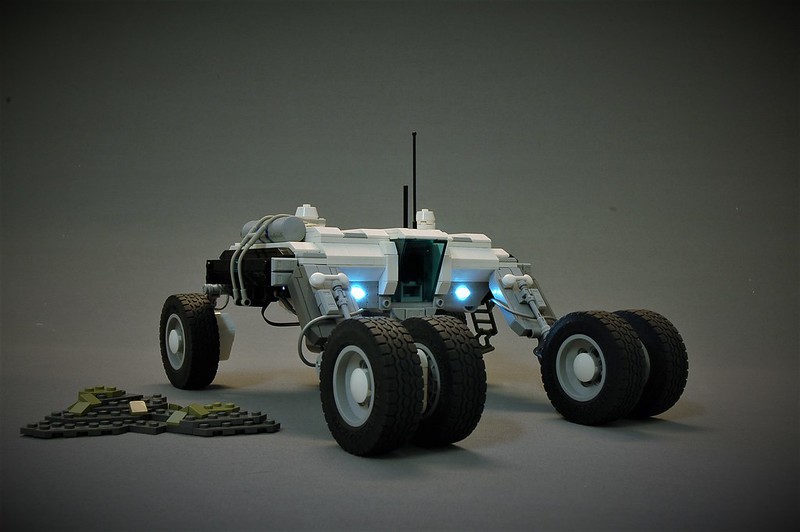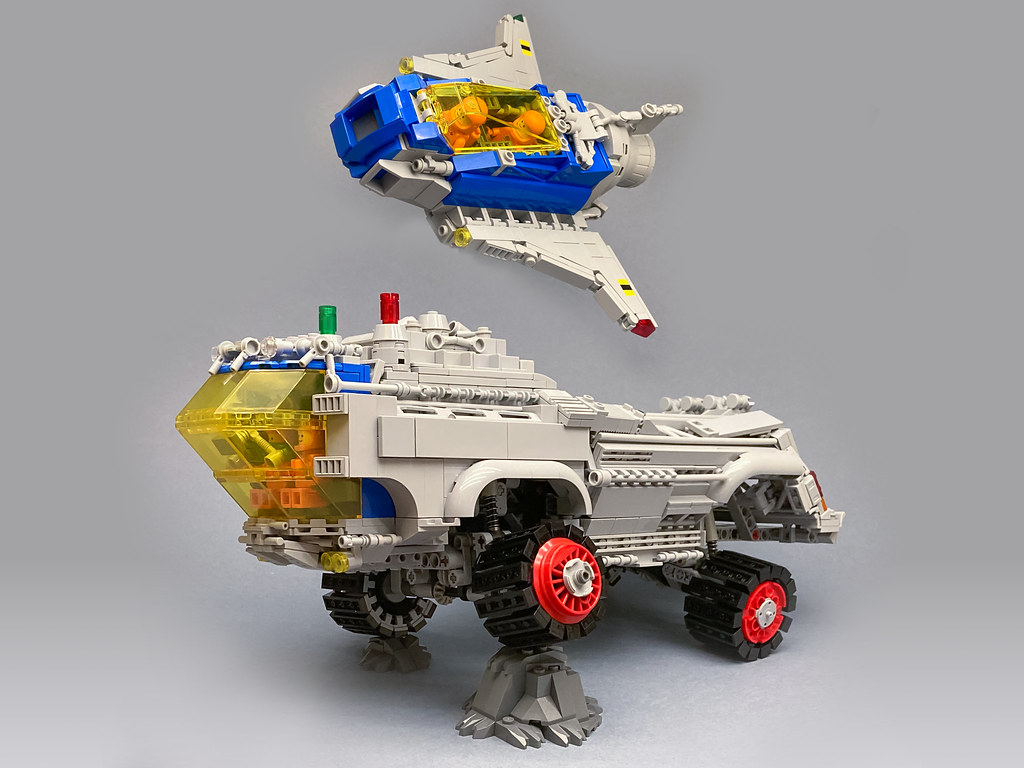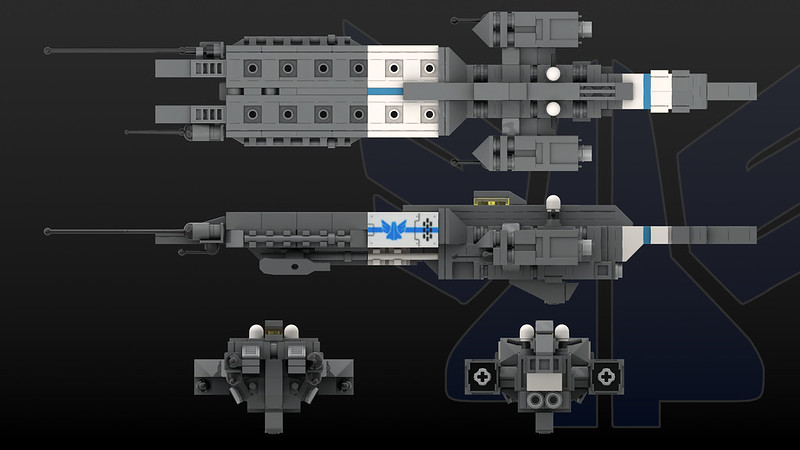Most people who have spent much time around the LEGO fan community have at some point encountered the phenomenon known as SHIPtember, that crazy building challenge every September to construct a spaceship that is at least 100 studs in some dimension (a SHIP being a seriously huge investment in parts). But what if it isn’t September, and you only want to build a spaceship that’s exactly 99 studs in length, featuring copious amounts of teal? Well, then you must be Markus Rollbühler. And then you build something like the Liu’s Inspiration to celebrate your new challenge month, MARCHtember.
Yes, I know, MARCHtember doesn’t make sense. Markus knows it, too. But it gets the point across, I suppose. And speaking of points, the large disassembled lime catamaran hulls make for some great greebly forward bits. And then there’s the teal: teal hot air balloons, and teal 3×3 dice, and just too many other teal elements for Mark Stafford’s peace of mind. But it couldn’t be inspired by Simon Liu without teal.
